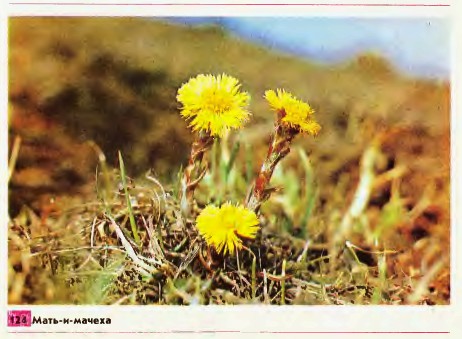Spring phenomena in plant life - Knowledge Hypermarket
>>Spring phenomena in plant life
§ 61. Spring phenomena in plant life
Spring is the time for the awakening of nature. According to the calendar, spring begins on March 1. In nature, spring comes into its own with the beginning of sap flow in trees, earlier in the south, and later on March 1 in the north.
The spring movement of juices near trees and shrubs is the first sign of spring. It occurs after the soil thaws and water from the roots begins to flow into all organs of the plant. At that time leaves Not yet. Water accumulating in cells plant stems, dissolves organic matter stored in them. These solutions move to the swollen and blooming kidneys. Already at the beginning of March, earlier than other trees, the spring sap flow begins at the Norway maple, a little later at the birch.
The second sign of spring is the flowering of wind-pollinated trees and shrubs. The first to bloom in the middle zone of the European part of the USSR is gray alder. Its flowers are inconspicuous, but the blossoming earrings of staminate flowers are clearly visible. 123 . One has only to touch an alder branch with catkins, as the wind picks up a whole cloud of yellow pollen.
Pistillate alder flowers are collected in small grayish-green inflorescences. Next to them, dry, blackened cones of last year's inflorescences are usually clearly visible.
Almost simultaneously with the alder, the hazel, which you met in the fall, blooms. Hazel staminate flowers develop in inflorescences - complex catkins, and reddish stigmas of pistillate flowers protrude from generative (flower) buds.
Early flowering of alder, hazel and other wind-pollinated plants- good adaptation to life in the forest. Bare leafless branches do not impede pollination. Pollen, picked up by the wind, is freely transferred from one plant to another.
Flowering coltsfoot is also a sign of the coming spring. This perennial herbaceous plant grows in open, sunlit places, on railway embankments, river banks, steep slopes and cliffs. As soon as the snow melts, its scaly stems already appear - flower stalks with bright yellow inflorescences, similar to dandelion inflorescences 124 . The large leaves of the coltsfoot grow after its fluffy fruitlets have ripened and scattered.

The coltsfoot received its unusual name for the originality of the leaves. Their underside is covered with white, soft, like felt, hairs, and the upper side of the leaves is smooth and cold.
The coltsfoot blooms in early spring, before the leaves bloom, perhaps because its thick, long rhizomes have accumulated reserves of nutrients deposited in the summer of last year. Feeding on these reserves, flower plants grow shoots and fruits are produced.
The third sign of spring is the flowering of perennial herbaceous plants of the deciduous forest. In areas of the middle lane, they bloom almost simultaneously with the coltsfoot. The first to bloom in the forest are the noble liverwort with azure flowers and the medicinal lungwort, then the oak and buttercup anemones 125 , Corydalis 119 , spring chistyak 126 , spring primrose 127 . All of them are photophilous and bloom under the canopy of the forest, when there are no foliage on the trees and shrubs yet.
In the life of some early-flowering herbaceous plants of the forest, their growth under snow is very interesting. Plants such as the blueberry, or snowdrop, grow even in winter under the snow.

In spring, many of them come out from under the snow with green leaves and with buds that formed last fall. They often bloom before the snow melts. 128 . That is why these plants are called snowdrops.
Plants that bloom in early spring always attract attention, because they are beautiful and because after a long winter they are the first plants to bloom. Unfortunately, they are often collected, making up large bouquets. Often they destroy entire plants, pulling them out with roots. Plants with flower-bearing shoots torn off do not produce fruits and seeds. This makes it difficult for them to reproduce. Many of the plants have become very rare, for example, noble liverwort, sleep-grass. They cannot be allowed to disappear completely. We must take care of the preservation of plants, do not tear them in order to throw them away in a day, do not damage wild plants and actively protect nature.
Lesson content lesson summary support frame lesson presentation accelerative methods interactive technologies Practice tasks and exercises self-examination workshops, trainings, cases, quests homework discussion questions rhetorical questions from students Illustrations audio, video clips and multimedia photographs, pictures graphics, tables, schemes humor, anecdotes, jokes, comics parables, sayings, crossword puzzles, quotes Add-ons abstracts articles chips for inquisitive cheat sheets textbooks basic and additional glossary of terms other Improving textbooks and lessonscorrecting errors in the textbook updating a fragment in the textbook elements of innovation in the lesson replacing obsolete knowledge with new ones Only for teachers perfect lessons calendar plan for the year methodological recommendations of the discussion program Integrated Lessons